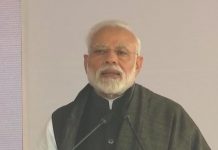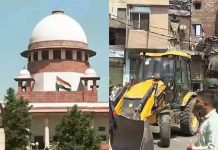 The much-awaited Union Budget 2021-22 has invited mixed reactions with some experts citing the proposed hike in expenditure on infrastructure, healthcare and raised cap on FDI in insurance sector as Centre’s attempts to pull up the pandemic-hit economy and the opposition Congress doubting the government’s intent.
The much-awaited Union Budget 2021-22 has invited mixed reactions with some experts citing the proposed hike in expenditure on infrastructure, healthcare and raised cap on FDI in insurance sector as Centre’s attempts to pull up the pandemic-hit economy and the opposition Congress doubting the government’s intent.
The Budget has come in the background of a tanked economy, doubts over the duration of economic recovery, high employment, widespread farm unrest as food growers demand repeal of three contentious farm laws and the nation coming to terms with Coronavirus pandemic.
The lockdown in 2020 to curb the spread of Covid-19 had hit the economy hard — companies suffered losses bringing in job losses and pay cuts that impacted the middle class and several small and medium enterprises were shut putting lakhs of migrant workers in distress.
Since the start of 2021, all eyes have been on Finance Minister Nirmala Sitharaman’s Budget 2021-22, presented in Parliament on February 1, 2021, in the hope that it will spur growth.
The government backers refer to the recent International Monetary Fund observation that the Indian economy, which contracted by 8 percent in 2020 due to lockdown, is expected to grow by 11.5 percent in 2021.
The Budget focused on the welfare of migrant population but several schemes announced for them have existed from some time. For instance, the ‘one nation one ration card’ scheme was announced in June 2019, technical intern training with UAE was formalized in 2017 and specific skilled worker visa between India and Japan was approved in January this year.
However, the tax holiday for affordable housing, used by migrants for rentals, extended for one more year will help the vulnerable sections.
Further, no Covid-19 cess, the NRI tax relaxation, correcting double taxation on foreign retirement fund, allowing one person companies to push start-ups are welcome moves. Though nominal growth of 10 percent is fine with 4 percent inflation, it will be 6 percent in real terms and continue to create pressure on the economy.
Focus on education sector by pushing employability and skill development of workers, developing warehousing, more self-help groups and promoting water self-sufficiency in rural areas are good ideas to deal with the adverse impact of lockdown.
The big number in the budget is the hike in capital expenditure from 4.12 lakh cr in revised estimates of 2020-21 to 5.54 lakh cr marking an increase of 34.46 percent.
An indication of reform is the announcement that two public sector banks and one state-owned general insurance company will be disinvested. The NITI Ayog has been asked to short list non-core PSUs for strategic sale after the government’s poor show in 2020-21 and the Centre estimates to get 1.75 lakh cr through disinvestment.
Further, Foreign Direct Investment in insurance sector is up from 49 to 74 percent and the Life Insurance Company of India will be on the stock exchange through an IPO. An asset reconstruction company is to be set up to take over bad loans of banks and give them flexibility to finance economic recovery.
Health sector allocation is up by 137 percent to 2,23,846 cr as compared with 94,452 cr in 2020-21 with 35,000 cr given for Covid-19 vaccination.
The fiscal deficit continues to be a problem and is estimated at 6.8 percent of GDP in 2021-22 and touch 9.5 percent in 2020-21. The government hopes to bring it down to 4.5 percent by 2025-26, a challenging task.
There is no personal income tax relief despite a tough year in 2020 when businesses were shut and jobs were lost, no increase in standard deduction and no raise in tax slabs.
PM Modi lauded the Budget saying it talked of all-round development. “Budget will bring several positive changes for individuals, investors, industry and infrastructure sector. It has the vision of self-reliance and features every section of the society. It aims to widen new opportunities for growth, new openings for youth, new high to human resources. It will boost infrastructure and structural reforms will give major fillip to growth and job creation,” the PM said.
The PM, who urged the farmers to give up protest, said the Budget has special focus on strengthening agriculture sector and boosting farmers’ income and doubled the allocation for MSME sector to create more employment opportunities.
Industry bodies CII and FICCI also appreciated the Budget.
“Delivering on her promise of unveiling a ‘Budget Like No Other’, the Finance Minister announced a raft of prudent measures aimed at rejuvenating government spending towards critical areas of increasing allocation on infrastructure expansion, education, housing and health as India rolls out a vaccine drive to inoculate 1.3 billion people”, said Uday Kotak, President CII.
“Given the constraints that the Finance Minister was facing, this has been a comprehensive statement. The government has done a commendable job and the various measures announced will strengthen India, individuals and industry,” said Dr Sangita Reddy, President FICCI.
However, the Budget has not gone down well with Congress leader and former finance minister P Chidambaram, who pointed out several short comings in the proposals.
According to Chidambaram, the Budget has seen 19 percent rise for rural job scheme MGNREGS from 61,500 cr to 73,000 cr but actually there is a 35 percent reduction from revised estimates of 2020-21 at 1,11,000 cr when severe migrant distress was recorded in the country during the lockdown in 2020.
The former finance minister cited the cess of 2.50 per litre on petrol and 4.00 per litre on diesel as a cruel blow to the average citizen, including the farmers, and noted the move was “also a cruel blow to federalism because the states do not get a share of the revenue from cesses.”
Listing the important issues that did not find mention in the FM’s budget speech, Chidambaram noted that the crucial defence expenditure in 2021-22 will see no rise and remain flat at 3,47,088 crore, almost the same as the 3,43,822 crore in the current year even as border row with China along Line of Actual Control in eastern Ladakh continues since April last.
FM Sitharaman gave out a mindboggling figure of 223,846 crore for health sector, a breathtaking rise from the budget estimates of 94,452 crore but she added the one-time cost of Covid-19 vaccination at 35,000 crore and the Finance Commission grants amounting to 49,214 crore to the figure, said Chidambaram.
The former finance minister further said that FM Sitharaman also included the allocations for the Department of Water and Sanitation to the figure for health sector. “Shorn of these add-ons, the allocations for health sector was 72,934 in 2020-21 and 79,602 crore in 2021-22,” said Chidambaram.
The former finance minister sounded caution saying the fiscal situation was in a mess as the Revenue Deficit at 7.5 percent and the Fiscal Deficit at 9.5 percent in the current year had exceeded every prediction, including that of the government.
According to him, in 2021-22 the government estimates it will borrow about 3.42 lakh crore less, but nobody is willing to believe that.
“The ‘borrowing’ number has been under-stated by assuming that there will be disinvestment revenues of 1.75 lakh crore. The record of this government on disinvestment is poor. The government has also assumed that tax revenues will increase by 15 per cent — another questionable assumption,” said Chidambaram.
The RD at 5.1percent and FD at 6.8 percent numbers for 2021-22 will send alarm signals to the rest of the world, especially the investors and international lenders, noted the former finance minister, adding that their apprehensions should have been allayed by laying out a credible fiscal correction path, year by year, until the year when the Fiscal Deficit will be 3 per cent or less.
“Nothing of that sort was attempted by the FM. On the contrary, her target was 4.5 per cent by 2025-26. Investors and lenders will bristle,” said Chidambaram.
The former finance minister noted that there was a huge expectation of a significant increase in government expenditure to offset sluggish private investment and private consumption but the Budget numbers show that total government expenditure will see a paltry rise from 34,50,305 cr to 34,83,236 cr.
The former finance minister charged that the vital farm sector has been short changed in the Budget as allocation from ‘Agriculture and Allied Activities’ has been reduced from 1,54,775 cr (Budget Estimates) to 1,48,301 cr (BE). “Of total expenditure, the proportion has been reduced from 5.1 per cent to 4.3 per cent,” he said.
Further, the budget allocation for Market Intervention Scheme and Price Support Scheme has been slashed from 2,000 cr to 1,501 cr and budget allocation for PM Kisan Samman Nidhi has been reduced from 75,000 cr to 65,000 cr, the former finance minister pointed out.
According to Chidambaram, the MSME sector was dismissed in one sentence with an allocation of 15,700 crore and this was like providing a fistful of oats to a hungry elephant as nothing was mentioned about providing liberal, low-interest loans, working capital or moratorium for the segment that creates jobs.
“Nothing will be done to revive closed units or to recover the millions of jobs that were lost. The FM seems to be unaware that thousands of MSMEs — especially micro and small units — have been closed permanently,” said Chidambaram.
Questioning the meagre allocation of 20,000 cr for recapitalization of Public Sector Banks at a time when the requirement is several times more, the former finance minister pointed out that the government intends to privatize two PSBs.
“The intent of the government is clear: let the PSBs bleed slowly so that they can all be privatized in the short term. Let us see the reaction of the public to this unconcealed desire to sell-off all public sector banks,” said Chidambaram.
Noting the tax reliefs and the tweaking of provisions of the tax laws completely by-passed the tax paying working class and the tax paying middle class, the former finance minister said each one of the measures announced by FM Sitharaman will benefit only the tax payers among the richer classes.
“There was no cut in GST rates. The mess of multiple rates remains. The saga of protectionism continues. Customs duties have been increased on a number of items in the wrong belief that a stiffer dose of protectionism will help Indian
industry,” said Chidambaram.
The government announced some high value highway projects in poll-bound states including 3,500 km at 1 lakh cr in Tamil Nadu, 1,100 km at 65,000 cr in Kerala, 675 km at 25,000 cr in West Bengal and 1,300 km at 34,000 cr in Assam.
Commenting on the move Chidambaram said the voters are not fool and know that these outlays will not be backed by any money in the Budget.
“I challenge the government to show me even a single line entry in the expenditure budget providing one rupee for these programmes. It will not be there, because, first of all, they have to give proposals. It has to go through several stages of approval. The scheme must be approved and only then money will be allocated, these are outlays, these are intentions, people know that.”
On the economic reform move of increasing FDI limit in insurance sector from 49 to 74 per cent, the former finance minister said it is inevitable as fresh capital is not available within the country but recalled that in 1997 the BJP had voted against a bill allowing 20 per cent FDI in insurance forcing the government of PM Inder Kumar Gujral to withdraw it.
Chidambaram noted the government was out to privatize one of the four nationalized insurance companies while it was celebrating FDI cap hike in the sector.
Also, spending on roads and ports will benefit big business, who will get contracts and help create demand for steel and electricity, which is good, but the Centre should lay equal emphasis on the welfare of poor, working class, migrants, agricultural labour and the daily wagers.
What’s up
– Cotton
– Cotton waste
– Raw Silk (not thrown) and silk yarn/yarn spun from silk waste
– Denatured ethyl alcohol (ethanol) for manufacture of excisable goods
– Prawn Feed
– Fish feed in pellet form
– Flours, meals and pellets of fish, crustaceans, molluscs or other aquatic invertebrates
– Maize Bran
– De-oiled rice bran cake
– Carbon Black
– Plastics Builder’s ware of plastic, not elsewhere specified or included
– Polycarbonates
– Wet blue chrome tanned leather, crust leather, finished leather of all kinds, including their splits and slides
– Cut and Polished Cubic Zirconia
– Synthetic Cut and Polished Stones
– Parts and components for manufacture of Tunnel Boring Machines
– Metal products like Screws, Nuts, etc.
– Plastic, for manufacture of charger or adapter
– Compressor of Refrigerator/Air Conditioner
– Specified insulated wires and cables
– Inputs and parts of LED lights or fixtures including LED
– Lamps
– Solar Inverters
– Solar lanterns or solar lamps
What’s down
– Naphtha
– Caprolactam
– Nylon Chips
– Nylon fibre and yarn
– Iron and Steel melting scrap, including stainless steel scrap
– Primary/Semi-finished products of non-alloy steel
– Flat products of non-alloy and alloy-steel
– Long products of non-alloy, stainless and alloy steel
– Raw materials used in manufacture of CRGO Steel
– Copper Scrap
– Components or parts, including engines, for manufacture of aircrafts by Public Sector Units of Ministry of Defence
– Platinum, Pallidum
– Waste and Scrap of Precious Metals












